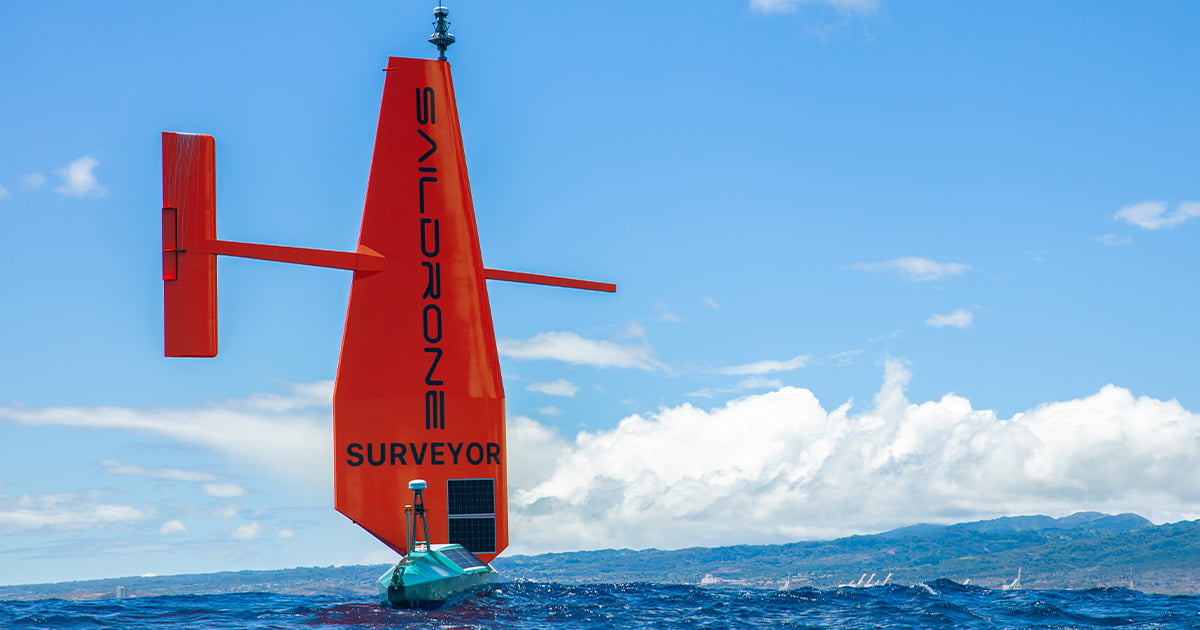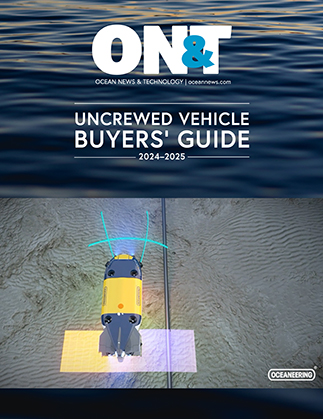The adoption of uncrewed systems and advanced sensors has opened up unprecedented possibilities for maritime exploration. These technologies offer the potential to conduct more efficient, cost-effective, and environmentally friendly operations.
Saildrone has evolved its autonomous platform, machine learning, sensor integration, and data telemetry to provide high-resolution real-time ocean data and intelligence to customers around the world. Recognizing the importance of the maritime domain to national security, the possibilities of renewable energy, and the value of the Blue Economy providing livelihoods and sustenance to billions of people, Saildrone has pushed technical and endurance boundaries to collect critical ocean data where it has traditionally been out of reach, or prohibitively expensive to collect.
Ten years to the month after Saildrone’s first Pacific crossing from San Francisco to Hawaii, its fleet of uncrewed surface vehicles (USVs), now 136 strong and scaling rapidly, has sailed more than 1,000,000 nautical miles and spent over 32,000 days at sea, demonstrating once again the reliability, endurance, and ability of its fleet to operate in diverse and challenging maritime environments.
The recent announcement by the American Bureau of Shipping (ABS) issuing the first-ever class certificate for a commercial USV marks a significant milestone in the acceptance and recognition of autonomous technologies in the maritime industry. One of the world’s leading classification organizations at the forefront of marine and offshore innovation, ABS granted classification for the Saildrone Voyager after an extensive review and evaluation process. The Voyager is the first autonomous asset built to ABS Class using the ABS Requirements for Autonomous and Remote Control Functions.
Classification allows the Voyager to operate in the ports and waters of countries that require vessels to be classed by organizations such as ABS and demonstrates Saildrone’s commitment to safety, standardization, and reliability in its technology and operations.
MISSION AS A SERVICE
Saildrone is known for its eye-catching USV, but the backbone of these vehicles is a robust and mature organization supporting deployment, execution, and data delivery. Unlike other companies that sell their hardware, this “mission-as-a-service” model removes barriers to entry and reduces customer risk. Saildrone assumes the responsibility of owning and maintaining the assets, which allows them to be constantly updated with the most current payloads and software.
With extensive experience deploying and operating data collection missions around the world and an expert team of mission managers, pilots, and surveyors, Saildrone is the overwhelming leader in ocean data collection using autonomous vehicles. Saildrone vehicles can remain on mission for months at a time, and collected data can be accessed 24/7/365 via a proprietary web portal or secure API, which seamlessly integrates into common operating pictures (COPs) and analytical platforms.
All of Saildrone’s vehicles are primarily powered by wind and solar energy with a minimal carbon footprint, making them an ideal platform for developing offshore renewable energy sources.
COMMERCIAL APPLICATIONS
From its origins in science and fisheries, testing the integration of various sensors and pushing the platform to its limits in the Arctic and Antarctic with partners like the National Oceanic and Atmospheric Administration (NOAA), Saildrone has expanded its data services to include ocean mapping and defense services for commercial applications.
Maritime infrastructure, including ports, shipping lanes, and undersea cables, forms the backbone of global trade and communication, and offshore energy has the potential to reduce global dependence on fossil fuels, but these activities require massive amounts of data from site identification through construction and operation. There is a global backlog for traditional survey ships. Saildrone USVs are available now.
The Saildrone Voyager and the larger Saildrone Surveyor represent a paradigm shift in how we explore our oceans. They carry the same cutting-edge multibeam sonar and sub-bottom profiling equipment as survey ships but operate at a fraction of the cost and carbon footprint. The bathymetry data that Saildrone can deliver has been found to meet the most stringent industry data requirements.
SENSOR SUITE
The United States Exclusive Economic Zone (EEZ), stretching from the coast to 200 nm (370 km) from shore, is one of the largest in the world, but only about 50% of it has actually been mapped. The Saildrone Voyager is optimized for coastal mapping, in waters to 300 m depth, equipped with the Norbit Winghead i80s, an inductively charged AML-3 sound velocity profiler, and sub-bottom profiler.
The Saildrone Surveyor’s advanced sonar system offers deepwater ocean mapping not available from any other autonomous platform. Equipped with the Kongsberg EM 304 MKII and the EM 2040, the Surveyor will help to meet the global backlog for full ocean depth surveys due to the lack of survey ship availability.
Saildrone is dedicated to advancing autonomous technology to meet the toughest maritime challenges. New capabilities include adding Starlink, allowing for high-bandwidth data transfer in near real time, a pan/tilt/zoom infrared camera at the masthead, and a proprietary passive acoustics array on the keel to detect, localize, and classify marine mammals, especially endangered whales, around offshore wind sites. Saildrone USVs have demonstrated their ability to withstand even the most challenging ocean conditions. From Arctic missions to hurricane tracking and Antarctica circumnavigation, Saildrone USVs have consistently proven robust and reliable.
As the maritime industry continues to evolve, the integration of autonomous technologies will undoubtedly shape the course of maritime exploration like never before. By harnessing the power of renewable energy and autonomous technology, Saildrone is revolutionizing the way ocean data is collected and utilized for public and commercial industry applications worldwide.
This story was originally featured in ON&T Special Edition 2023. Click here to read more.

